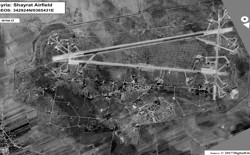Dealing with other states, whom the United States has a hard time categorizing as a threat, rival, competitor, or partner requires a new way of approaching national security decision-making. China is a partner in trade, but a rival regarding territorial rights in the South China Sea. Russian support may stabilize the Syrian crisis, but interference in domestic national elections and its intervention through the coercive use of force in Crimea and the Ukraine are threats. Creating actionable solutions to these challenges requires public involvement in decision-making in order to transcend hyper-partisan political positions and rigid adherence to ideologies that dominate the current decision environment.
Interactive human endeavors are full of passion and all-or-nothing views. All decisions, especially national security decisions, involve a moral choice. The virtue and vice of the various political, academic, and military elite belief systems provide the rational context within which choices are often made. However, rigid adherence to these belief systems results in national gridlock and inaction. To realize the best the United States has to offer at home and abroad, citizens must work together to forge commonsense solutions to the nation’s most pressing challenges.
Compromise, open debate, and decisions made within the procedural checks and balances of the democratic process are the best way to reconcile competing perspectives with pragmatic solutions. The goal of compromise is to find consensus positions that incorporate the best elements of the negotiating stakeholders’ arguments while balancing the moral imperatives of competing views. Contemporary negotiation literature is replete with methods of negotiating win-win compromises. Traditional transactional negotiation methods encourage finding common ground outcomes that are better than each party’s calculation of its best alternative to a negotiated settlement.1 Contemporary win-win and traditional transactional negotiation solutions are dependent upon justifying behavior within (but not necessarily across) each party's competing worldviews. Compromise may require empathy for another’s perspective; but it is the agreement on action and outcomes, not the reconciliation of divergent philosophies, interests, and motivations that facilitate compromise solutions.
Alternatively, when action is required, but consensus through compromise is elusive, national leaders must forge security policy from the tapestry of perspectives, theories, and perceived realities that collectively constitute the American conscience. To paraphrase F. Scott Fitzgerald, this approach must accommodate two opposing ideas at the same time, while retaining the ability to function. Inflexible positions, born of rigid adherence to ideological perspectives, are the enemy of actionable solutions.
Actionable solutions born of fuzzy collective norms can transcend the limited logic models that dominate divisive debates among elites. Embracing the melting pot or mixed salad metaphors, which used to characterize these norming phenomena, requires an informed public that appreciates the moral goodness of the collective conscience. Moral choice requires blending diverse opinions and perspectives into actionable decisions.
Informed and engaged citizens arrive at solutions in a different way than political, academic, or military elites who rely on limited explanatory theories and dogmatic models to inform their choices. Behavior derived from the collective conscience appears contradictory and relativistic to purists in any tradition. Only time and a retrospective view of outcomes can validate or invalidate decisions derived from a tapestry of competing perspectives.
Through an inductive approach, collective decision-making can produce a more effective and moral outcome than the reductionist approaches of experts in a particular field.2 As James Surowiecki observed: “With most things, the average is mediocrity. With decision making, it’s often excellence.”3 Over time, favorable outcomes associated with collective solutions reinforce the country’s faith in its conscience. Unfavorable outcomes instigate change.
Solutions grounded in the collective wisdom have several advantages over the limited rationality of specific ideologies embraced by experts in a given field. However, several conditions are necessary to catalyze group choice wisely, avoiding groupthink. Wise populist decision-making requires a diversity of thoughts and opinions, independently formulated options, and democratic processes to merge those ideas into actions. Crowd decisions consider a wider array of potential options and tolerate fuzzier outcome potentials than those from experts tied to narrower fields of thinking. The collective experience of the American public provides insight and a rich understanding of specific problems and the relevance of specific remedies to those problems.4
As with any opinion piece as sweeping as this, there are several caveats that accompany its intended application. As James Surowiecki points out, populist problem solving requires a “fuzzier and less definitive” approach than traditional expert-informed choice.5 Collective solutions “are not imposed from above, but emerge from the crowd.”6 A precursor to populist solutions is transparent debate regarding the nature of problems and public interest. This knowledge requires a medium to convey expert insights and opinion to an engaged population and their leaders.7 Collective solutions work best on problems associated with achieving compromise and cooperation; however, knowledge about the problem and feasibility of solution options, requires subject matter expert input.
This is where the media and authors within the elite disciplines can be of service to the nation. Journalists must temper their investigative journalism and policy criticism passions with clear, precise, and respectful representations of the various voices engaging in the national debate. When journalistic criticism and news reporting cross the line into critical theory advocacy, it is not journalism (at least, it is not helpful journalism). Likewise, policy, academic, and military experts must explain their arguments and the limitations of the theories and models they draw from in language understood by the public. Neglecting to highlight generally accepted limits to methods, when engaging those unfamiliar with the specialized literature, language, and assumptions associated with a specific discipline is professional malpractice.
Finally, this argument relies on the diverse views of an informed community of citizens to facilitate and empower choices that lead to national action. It is an exclusionary and elitist notion. Some people have neither the desire nor the capacity to accept this responsibility, but the overwhelming majority of us do. The disengaged public self-selects out of their civic responsibility to participate in a collective decision. Broad-based positions resulting from an inclusive populist approach mitigate the influence of uninformed and extreme advocacy outlier voices.
The United States represents an experiment in a constitutionally based, representative democracy that was founded on the prioritization of individual liberties over majority rule. Citizens must accept the burden of informing themselves of the pressing issues facing the nation and committing themselves to the civic responsibility of engaging in the governance and defense of the nation.
The attainment of civil discourse leading to national action is not magic, nor inevitable. Natural law does not dictate civility, and the arch of history does not suggest the inevitability of civically responsible behavior within societies or between countries. To have and maintain civil behavior within and between countries takes work. The human experience is complex, and human interactions are complicated. An informed and engaged American public, and the leaders that represent them must learn to be tolerant of ambiguity and get comfortable with conflicting ideas in their quest for moral and pragmatic solutions to the nation’s challenges. This may be especially important as the Unites States adds an entrepreneurial business perspective—with its own language, methodological approaches, decision frameworks, and risk assessment considerations to the national dialogue.
To be successful, the nation must rediscover its traditional strength, developing actionable solutions to complex problems through consensus when possible, and by loosely sewing together a tapestry of collective conscience when necessary. Inaction and gridlock result from ideological hubris. They represent the abdication of civic and international leadership responsibilities. National inaction and gridlock are unacceptable to a nation founded as a representative democracy; and if one believes in the redeeming value inherent in the American character, it is unacceptable to the preservation of a world order led by the Unites States.
ENDNOTES
1. Roger Fisher, William Ury, and Bruce Patton, Getting to Yes: Negotiating Agreement without Giving in, 2nd Ed., New York: Penguin Books, 1991, offers an overview of negotiation theory and strategies, which numerous scholars associated with the Harvard Negotiation Project have expanded over the years.
2. John Lewis Gaddis’s defense of historic method inspired this second point. John Lewis Gaddis, The Landscape of History: How Historians Map the Past, New York: Oxford University Press, 2002.
3. James Surowiecki, The Wisdom of Crowds, New York: Random House: Anchor Books, 2004, p. 11.
4. Ibid., pp. xi-271.
5. Ibid., p. 270.
6. Ibid., p. 271.
7. Ibid., p. 271.
















